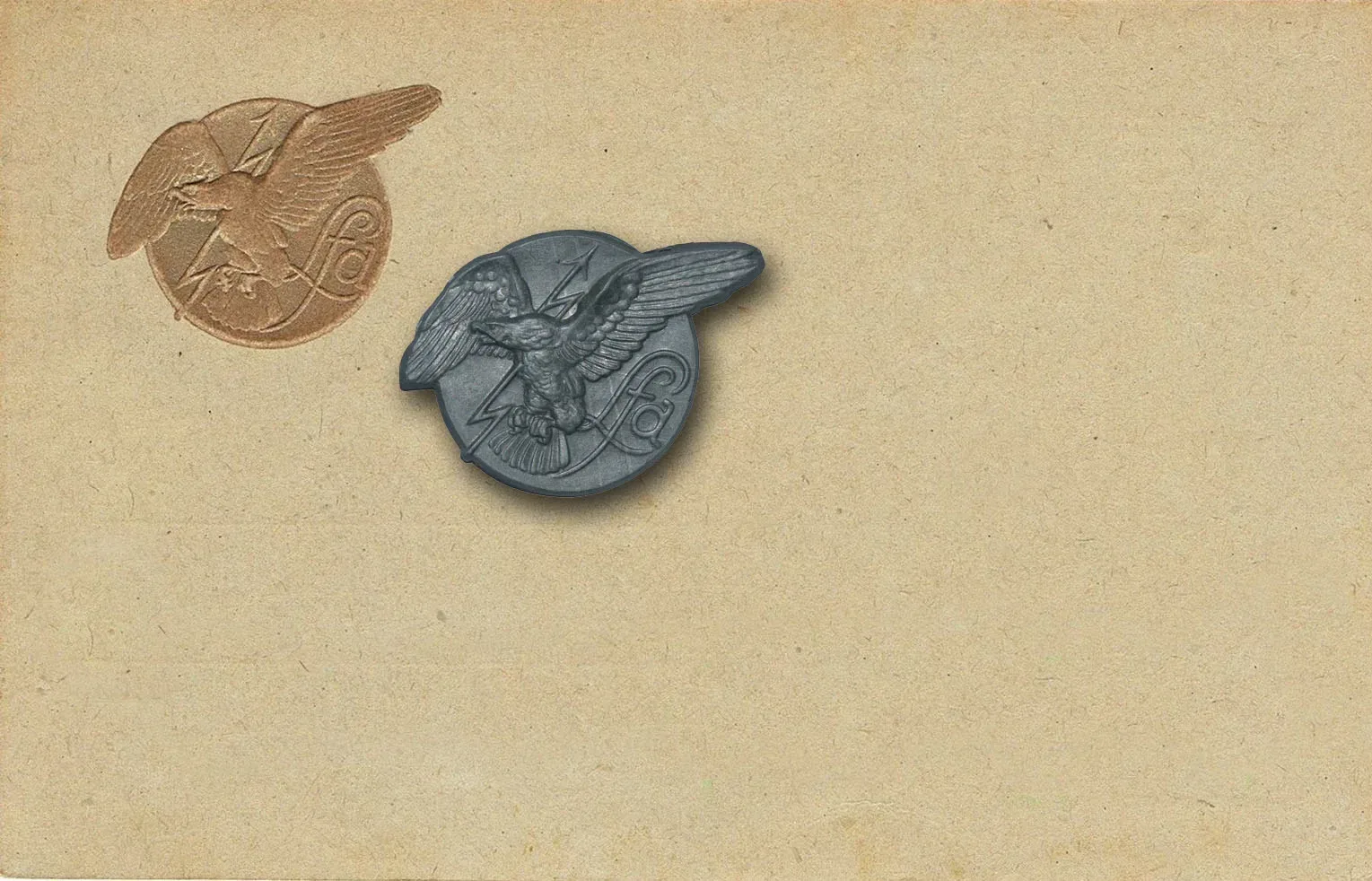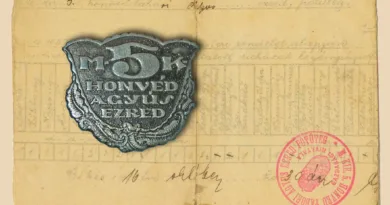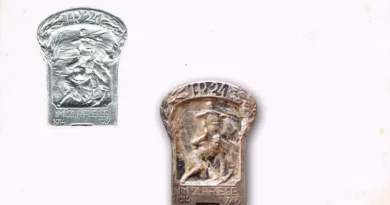Anti-aircraft unit badge
In the great reorganization of the Monarchy artillery in early 1918, mixed artillery regiments were established. This meant that the previously separated field gun and howitzer regiments had been dismantled. Two mixed field artillery regiments were organized per infantry division, the first of which was given the division number and the second a number 100 higher than the division number. So, for example, the two field artillery regiments of the 20th Honvéd Infantry Division wore the numbers 20 and 120. From the point of view of the interpretation of artillery Kappenabzeichen, it is important to know that from that time the names of the regiments have also changed. The former Gun and Howitzer Regiment names was replaced by the uniform name of Field Artillery Regiment (FAR).
Prior to the reorganization, the field gun regiments had 4 gun, 1-1 mortar and anti-aircraft batteries (the latter the 5th and 6th batteries). In the howitzer regiments, there were six howitzer batteries. After the reorganization the lower numbered regiment received the anti-aircraft battery as 6th after the 2 gun and 3 howitzer batteries. The other, higher numbered regiment got the mortar battery.

This corroborates with the script of the second post card. This was printed before the reorganization, when the field cannon regiment still existed with its 5th ack-ack battery. So only one anti-aircraft battery was deployed per division, before and after 1918 too. This is how the organization of antiaircraft artillery was developed. While it is today on the infantry regiment level, then it was only present at division level. Therefore, the second post card shows the number of the infantry division.
The badge itself was designed as a qualification badge for anti-aircraft artillery after a ministerial suggestion in June 1917. Since the qualification badge was finally not introduced as official reward the motive was used as ordinary Kappenabzeichen. It is not particularly rare, we can assume that quite many pieces were produced. As is seen on the post cards, the symbol was rather well known and very much in use.




